Business Solutions
Managing Multiple Payer Relations
Our annual roundtable with the HMEB Editorial Advisory draws one almost unanimous conclusion: providers must diversify and learn how to deal with multiple payers and revenue sources.
- By David Kopf
- Oct 01, 2019
 How good are you at working
with Medicare? Well, imagine
having to do that several
times over. Each year, the
Editorial Advisory Board of
HME Business graciously
contributes some of their
time to share their insights into what key trends
they think providers should be incorporating into
their strategic business planning for at least the
near term.
How good are you at working
with Medicare? Well, imagine
having to do that several
times over. Each year, the
Editorial Advisory Board of
HME Business graciously
contributes some of their
time to share their insights into what key trends
they think providers should be incorporating into
their strategic business planning for at least the
near term.
This year, there was one undeniable trend
shared by many of the board members:
providers are going to need to diversify their
revenue sources beyond the Medicare-plus-some-retail approach that has become prevalent
in the industry, and really start specializing in
managing relations with multiple payers and
revenue sources. They must learn how to work
with a mix of Medicare/Medicaid managed care
organizations, private payer insurance carriers,
facilities-based care providers such as skilled
nursing facilities, and health plans.
Bearing that in mind, they will need to learn
how to better negotiate with those various
payers; they will need to learn how to interact
with patients and referral partners more effectively;
they will need to learn new business
management techniques; and they will need
to learn more about the resources that will be
around to help them do this.
And, while all this is happening there will
be some important regulatory and legislative
issues pertaining to Medicare’s DMEPOS
program that they will still need to monitor
and address, as well.
So, without further introduction, let’s dive in
and learn more about what the board members
have to share:
SEEK DIVERSIFIED PAYER SOURCES
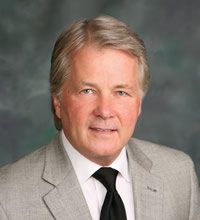 Steve Ackerman, CEO of Spectrum Medical Inc.
Steve Ackerman, CEO of Spectrum Medical Inc.
As this issue goes to press, the
bid window for Round 2021 of
competitive bidding will have
closed fairly recently on Sept. 18,
and Ackerman says he worries
that his fellow providers will sit
back on their hands with a “wait
and see” attitude.
“I feel very strongly that now is going to be the
time to really prepare, and to shore up systems, and
review expenses, and root out waste and continue
activities that you diversify from Medicare,” he
warns. “Because there’s still going to be 16 months
of unsustainable prices that can kill any business in
that timeframe, particularly, ones that have been
weakened by three years of cuts. So you can’t take
your eye off the ball right now.”
Rather, providers need to have a business plan
that treats getting a Round 2021 bid contract like
icing on the cake, he says.
“People need to continue to do what they’re
doing to make Medicare a balanced part of their
revenue stream rather than something that they
depend on,” he urges. “For the first time in six
years, we may see an increase in price, but how
much of that is going to be uncertain, and it’s
going to be a year and a half before you see a
check on that.”
That 18-month gap is also a good time for
providers to invest in not just their business, but
the industry as a whole, he adds.
“It’s also a good time I think now to get involved
with the industry because things are slowing down
a little, there’s less direct lobbying going on at CMS, but there are still plenty of operational issues
and regulatory issues that need to be lobbied,” he
says. “And if people haven’t joined a AAHomecare
or VGM or other organizations that are doing good
work moving the regulatory agenda ahead, it’s a
good time to throw your hat in the ring and be a
part of that effort.
“So, my message overall is don’t let this time
be wasted between now and when the bids are
announced and the bids are implemented, it’s
still a good time to shore your business up and
to make sure that it’s going to be sustainable
no matter what happens during the bidding
process,” he adds.
PAYER RELATIONS TOP THE AGENDA
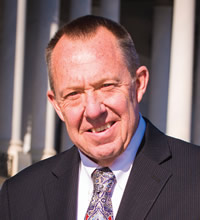 Tom Ryan, president and CEO of the
American Association for Homecare
Tom Ryan, president and CEO of the
American Association for Homecare
Speaking of getting involved with
associations, if you stop Tom
Ryan and ask him what the
American Association has going
from a legislative or regulatory
point of view, he can rattle off a
variety of agenda items: the push
to get co-sponsors for the House bill that
provides relief to non-bid, non-rural areas; or
complex rehab legislation; or the drive to
remove non-invasive ventilators from competitive
bidding. But Capitol Hill isn’t the only thing
on AAHomecare’s agenda these days.
“I think what has become prevalent on our
minds, and to some surveys we have done, is
that there is a lot going on in the world of payer
relations,” he says. “As a matter of fact we had a
very good well attended Payer Relations Council
summit [Aug. 27] and we realized that there are
more challenges in the managed care area, and
we want to be your partner and help to fix those
challenges.”
With the addition of Laura Williard to head up
the association’s payer relations back in 2016, it
was clear that managing various payer relations
was a challenge AAHomecare knew providers
would have to address. More recently, the association
formed its Payer Relations Council in July
to focus on non-Medicare payer relations, such
as Medicare Advantage, Medicaid, Medicaid
Managed Care Organizations and commercial
plans, and that council just had its aforementioned
meeting.
Essentially, the association has been laying
the foundation to help providers deal with the
fact that, as businesses, they will have to view
funded revenue as a wide spectrum, and they
will need to know how to tap into that spectrum.
Why? There’s a business imperative due
to funding cuts and retail competition. Where
Medicare might have accounted for 50 percent
of providers’ revenues, that portion is now more
like 20 percent.
“With the advent of more mandatory managed
care — on both the Medicare and on the
Medicaid side — you’re seeing more and more
of the private payers becoming part of the total
revenue payer mix for our providers,” Ryan
explains. “So, therefore, the association had to
evolve and be your choice and your voice on the
state level as well, from the payers’ standpoint.”
In many respects negotiating with Medicare
has essentially primed the association to
do engage in the same type of negotiating
with other payers. In fact, it’s already started
happening, according to Ryan.
“For the first time ever, we’re having a major
payer actually flying into Washington with their
executive team and meeting with myself and
Laura and David, and we have a good agenda,”
he says. “And again, it comes down to patient
protections and reimbursement that’s sustainable
for the provider at the end of the day.”
START CLIMBING THE MANAGED
CARE LEARNING CURVE
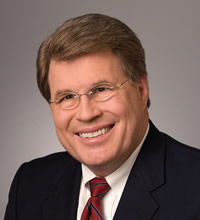 Jeff Baird, Esq., chairman of the Health Care
Group at law firm Brown & Fortunato, P.C.
Jeff Baird, Esq., chairman of the Health Care
Group at law firm Brown & Fortunato, P.C.
Providers must learn how to deal
with third-party payers, and in
particular commercial insurance
companies that sponsor
Medicare Advantage plans and
Medicaid Managed Care plans.
(In fact, this is a topic that Baird,
recently spoke on for “Managing the Manage
Care Opportunity,” an HME Business webinar
that is available as an archive at hme-business.com/webinars.)
Managed Care is quickly becoming part
of everyday business for HME providers.
Approximately 35 percent of Medicare beneficiaries
are signed up with Medicare Advantage
Plans, while roughly 70 percent of Medicaid
beneficiaries are signed up with Medicaid
Managed Care Plans. Moreover, these percentages
are increasing.
“Over the last 10 years or so, the DME industry
understandably has been focusing on what to do
with competitive bidding, what to do with post
payment audits, things of that nature,” Baird
says. “And the industry just didn’t pay any attention
to the growth of Medicare Advantage plans
and Medicaid Managed Care plans, and they
snuck up on us.
“And all of a sudden, we as an industry, we’re
finding out that more and more of our patients
are being serviced by these insurance companies,
and if we’re not in network, then we can’t
take care of the patients, and that’s a problem,”
he continues explaining. “And so I see as a big
challenge for us as an industry is to understand
how Medicare Advantage works; understand
how Medicaid Managed Care works; understand
how to have the best chances of being
admitted to the supplier panels sponsored by
the Medicaid Managed Care plans and Medicare
Advantage plans. And then after that, can we
live with the reimbursement that they pay?”
Baird notes that the challenge of obtaining,
negotiating, working with these insurance
companies is foreign to most of DME suppliers,
because it has not been in the DME space until
just recently. That means providers don’t have
much experience in terms of working with these
third-party payors. That said, it’s not rocket
science and the work pays dividends.
“Once a DME supplier is on a panel and has
signed a contract with a third-party payor, then
it is a lot easier working with that third-party
payor than it is working with traditional Medicare
or traditional Medicaid,” he explains. “So, it’s
actually simpler working with these commercial
insurance companies.”
INSTALL AN ‘OPERATING SYSTEM’
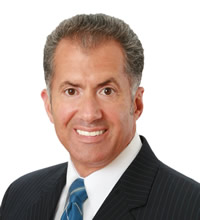 Ty Bello, president and founder of Team@Work
Ty Bello, president and founder of Team@Work
When it comes to juggling
multiple payers, maximizing
multiple revenue streams, and
yes, still trying to make the most
of Medicare and Medicaid
opportunities, providers need to
implement management practices
that help them flexibly manage all that.
Specifically, Bello says providers need to start
thinking about an “operating system” for their
businesses. And it turns out they don’t have
to start from the ground up — there are some
proven systems of strategic business management
that apply to HME.
“There are multiple systems that are out there
and many people have heard of these,” he says.
“They’ve heard of Traction which is an entrepreneurial
operating system. They’ve heard of the Four Disciplines of Execution or sometimes called
4DX, and some of them may even heard of the
Rhythm System. Now, those are all business operating
systems and all focused on ever so slightly
different things, but overall similar.
“I’m somewhat interested in which one
providers use, but more importantly, use something,”
he implores. “Please use something. Each one of these has its own specialty area, but
again, all are very, very similar.”
In terms of selecting a system to run a business,
Bello says providers should consider
several things. One, is this system currently
being use in similar businesses in our industry.
Other home medical equipment businesses,
respiratory and complex rehab businesses?
Second, can they implement and use this on
their own after being educated on it. And, third,
have the people using this system used it in their
own business.
And with Round 2021 bidding buttoned up,
now is the time to get cracking, he adds.
“This great opportunity,” he says. “The bid
window is closed. We’ll know in a few months who
won, who did not win, what the numbers are, etc.
What are you doing between now and that time to
set in place a business plan, a strategic business
plan and system that works continually whether
you win or don’t win? Because then you’ll have a
system to thrive regardless of that outcome. Now’s
the time; this is the training that takes place before
the big event.”
DEMONSTRATE YOUR VALUE
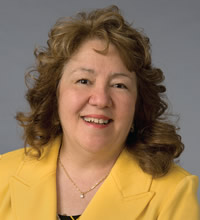 Sandra Canally, RN, the founder
and CEO of The Compliance Team
Sandra Canally, RN, the founder
and CEO of The Compliance Team
When providers get out into the
marketplace and talk to prospective
payers, networks, referrals
and other revenue sources, they
must square away some time to
think carefully about how they
can communicate the value they
provide in their community’s continuum of care.
“They need to really demonstrate to the
prescriber and to the payer why their companies
should be on their network,” Canally says.
The answer is not always simple. For instance,
a diabetic provider can simply provide supplies,
glucose monitors and insulin pumps, or it could
consider all of the companies that are involved
with diabetes and the care of the diabetic
patient, and then think about how it can truly
enhance that care.
“Why not add diabetes self-management
training, where you have the capability of doing
classes for the Medicare beneficiary to better
educate, better manage and control their
diabetes?” she suggests. “Then you would
have that added offering or service to then
take to Mrs. Jones’s doctor to say, ‘We’re now
offering this service.’ It’s through all of these
integrated care models where you’re sharing the
information and the care coordination with the
prescriber and the payer that will make all the
difference in terms of moving forward.”
And that’s just one idea for one category.
Provides can take that a step forward. For
instance, there is a good deal of patient data
being reported to payers and physicians, but
many plans are also wanting to hear about
patient-reported outcomes, instead of just
clinical outcomes, so if a provider can help facilitate
that process, it then demonstrates its value,
Canally says.
Of course, some provider might balk at
having to provide extra service in a market with
declining reimbursement, but Canally says this
type of service is what will get the contracts.
“This is an opportunity to get your reimbursement
up to where it needs to be,” she adds.
ENHANCE YOUR ENGAGEMENT
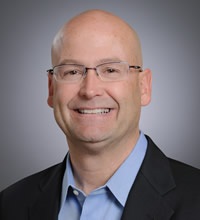 Rob Boeye, executive vice president of HME for Brightree LLC
Rob Boeye, executive vice president of HME for Brightree LLC
Of course, part of that effort to leverage patient relationships to make a difference with payers and partners must include the sorts of tools that help providers foster patient engagement. This helps automate repetitive processes, such as sending out appointment reminders, requesting insurance updates, and communicating delivery and orders status.
The upsides are clear in terms of operational cost savings, patient convenience, care outcomes, and payer relations. And, there are technology tools out there to do it, Boeye says (his company definitely makes those tools), but it’s not as simple as flipping a switch.
“How do we get patients to adapt and actually use them? How do we get them to scheduling? How do we get them to update their insurance cards? How do we get them to potentially show us a video of the product that they currently have, so that a provider could diagnose and potentially even solve an issue as opposed to sending the truck on the road,” he says. “All of those things are available right now from companies on the applications. Where I’m seeing the biggest struggles is with truly where does that provider convince that patient to actually utilize this app?”
That said, providers’ efforts to get patients to use patient engagement tools could be benefiting from an increased desire for self-service among U.S. consumers. Think about it: we currently use our cell phones to order tonight’s dinner and get updates on our prescriptions. Providers need to think about how they engage with patients in similar way, Boeye says.
“With a patient engagement app, that is really going to automate and simplify how they connect with their patients,” he explains. “I think they need to look to consolidate all patient interactions really into one secure platform. That’s going to empower care and free up resources and create opportunities to accelerate cash flow.”
TELL A STORY
 Wayne Slavitt, founder and CEO of Mobül: The Mobility Store
Wayne Slavitt, founder and CEO of Mobül: The Mobility Store
And then there’s in-person patient engagement. Many providers have made major transitions to retail sales, and for Slavitt, a retail-only provider, he says that providers need to think about how their staff and stores help paint a picture in patients’ minds — they need to tell a story.
“I talk about ‘the story’ a lot,” he says “When we’re considering taking on a new vendor, for example, one of the first questions I ask is, ‘Where does your product fit in with our ability to tell our story?’ Because when a customer comes in, we tell them a story. You know, ‘We have this beautiful chair at this price, and we have these features on this one,’ and if we’re going to bring in another product that’s so similar to something we’re already selling, then that’s only going to confuse a customer.
“So we oftentimes have to ask the vendor, ‘Tell us how your product fits into what we’re trying to sell. How is it going to affect the story? Is it going to make it better? Is it going to make it worse? Is it going to be confusing?’” he adds.
Slavitt’s entire store is set up to tell that story. A sizable section of the store is made to resemble a home with different rooms. In each room a range of products is displayed so that they can show how they fit into customers’ lives. Then staff can lead customers through the store and the products and let the environment and the wares help them tell that story.
“We love walking through the store with customers,” he says. “We like showing them a range of products. The story has become such an important part of what we do.”
SHAKE THE TREES
 Ron Resnick, president and owner of Blue Chip Medical Products
Ron Resnick, president and owner of Blue Chip Medical Products
At the end of the day, job one for providers is to create new business, Resnick says. Providers must do the homework and find the new opportunities, whether it’s a nursing facility, health network, or whatever.
“The dealer has to get out of his office,” he says. “He has to get out of his retail store, and he’s got to go out and market. They can’t be too busy to sell.”
And Resnick adds that vendors are invested in their providers’ success and will help facilitate that new business development if they can. His company specializes in helping facilitate educational meetings between providers and potential funding or revenue sources.
“We go out and we hold their hand and we take them into places where we talked about calling on institutions, whether it’s long term care facilities, hospice,” he says. “And, maybe, in some of the areas, their reimbursement may not be great but, you don’t know until you go out there and you work it.
“We go out and we help educate the dealer and then educate the facility, because they may not have the knowledge or the expertise in a particular area like we do in our market,” he continues. “When we go into a facility, my job is to educate, not sell. The education sells itself. Then they say, ‘We want to work with that company providing it because they have the right know-how and the right products.”
BUT WAIT, THERE’S MORE!
In addition to payer relations and
diversification, Legislative issues
remain key priorities for providers.
While diversifying revenue and learning how to juggle multiple relations with multiple payers were a top priority for the board, there are some key legislative and regulatory issues when it comes to the Medicare program that providers must continue to monitor:
Front-Burner Legislative Items
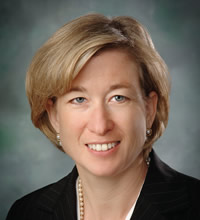 Cara Bachenheimer, head of the Government Affairs Practice, Brown & Fortunato
Cara Bachenheimer, head of the Government Affairs Practice, Brown & Fortunato
Plenty of time remains in the legislative session, and Bachenheimer sees three items as key priorities for the industry:
The first, H.R. 2771, which calls for reforms to competitive bidding in order to permanently provide rural and non-bid area relief, as well as eliminate the oxygen budget neutrality requirement.
The second, protecting complex rehab, and there are a few items in this regard. H.R. 2408, would require Medicare to create a separate benefit category for complex rehab technology (CRT) wheelchairs. Also, House and Senate bills H.R. 2293 and S.1223 would permanently exclude manual complex rehabilitative technology (CRT) wheelchairs from the competitive bidding program and will delay Medicare from applying competitive bidding-derived reimbursement rates to accessories for manual CRT wheelchair for 18 months.
The third, convincing HHS and CMS to walk-back their decision to include non-invasive ventilators in Round 2021 of competitive bidding. So far House and Senate sign-on letters have been circulated to help convince the agencies that there is Congressional will to see this change.
“That’s three topics that we have legislative initiatives in either the House, or Senate, or both. We probably have close to three months of legislative activity,” she says. “Next year’s an election year so it’s going to be a tougher year. … There definitely will be healthcare vehicles this year.”
And that means that while providers might need to juggle multiple payers and revenue strategies, they also must save some time for grassroots lobbying.
“We really need to do some more work, in terms of getting more co-sponsors, getting more widespread support for these initiatives across the country,” Bachenheimer says. “That’s something that every single DME provider can do in their backyard. They need to contact their local, or D.C. office, or their member of Congress and ask them to get on board with these bills.”
This article originally appeared in the October 2019 issue of HME Business.